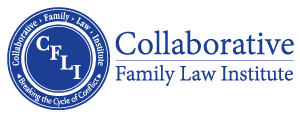MY TOOLBOX
By Jeffrey P. Wasserman, Esq., Accredited Collaborative Professional, jwasserman@sbwh.law #AskAboutCollaborative
My Wife says I have a glazed look whenever I enter a hardware store, looking at all of the different tools. And she is right. After all, I am not a handyman, plumber, electrician, carpenter or mechanic and I would have no knowledge what a lot of the tools are for nor would I know how to use them. I would have the same look entering a store specializing in technology. I am very grateful that I have found my niche in life as a lawyer, as I would probably have starved trying to make a living doing any of the other things mentioned.
As a Collaborative Lawyer, I have developed my own Toolbox. It consists of the tools I need to keep handy to practice my skills. There are no hammers, screw drivers, wrenches or other tools of that nature. There is a three-ring notebook (yes, I need the physical notebook) housing the following items for my practice:
- IACP Minimum Standards and Ethics
- FACP Collaborative Process Ethical Standards
- Collaborative Law Process Act consisting of §61.55-61.58 Fla. Stat.
- Florida Supreme Court Rule 12.745 Fla.Fam.L.R.P. Collaborative Law Process
- Rule 4.1.19 Rules Regulating the Florida Bar
These are the minimum tools all Collaborative Attorneys should have in their Toolbox. For other Collaborative Professionals, you should substitute item #5 for your own professional rules governing your specific practice area.
From these, you will have immediate access to the basic tools needed for participating as a Collaborative Professional. The notebook, whether physical or stored in your computer or the cloud, should be handy for easy access in your office and should be available for all team meetings as a source for reference when questions arise.
But, doesn’t the Toolbox feel light containing just these few tools? Yes, it does. So, I have expanded my Toolbox to contain the Florida Supreme Court Forms, 12.985 (a) thru (g) Fla.Fam.L.R.P. In addition, when I find appropriate forms I have used with others in my different Collaborative cases, I have added a copy of those forms, as well. They are there for easy reference for when I commence a new matter and the Team need to select the required Participation Agreement and other preliminary forms suggested for use in commencing the Process. Suddenly my Toolbox is expanding.
Of course, I have my Retainer Agreement and Addendum for when the client elects to use the Collaborative Process for their case. All other professionals should have their engagement letters and any preliminary forms they use in commencing the Process in their own Toolbox.
I do not rely on the compilation of forms to be the final drafts of forms to be used. I am always finding that there are people who have built a better mousetrap than I carry in my Toolbox. I have no pride in borrowing and modifying my forms to make them better. And neither should you. As Collaborative Professionals, we should all work together to make us better at what we do, so we are able to better represent our clients.
Understand, that this article is drafted for those who practice in Florida. Each state has its own Statutes and Rules and laws that govern the way the Collaborative Process is conducted. You should merely substitute your own state’s laws to your Toolbox, always making sure you have the IACP Minimum Standards and Ethics as the first thing in your Toolbox. This article may come off as very elementary and for most of you, I hope it does. If I have reached anyone in suggesting tools for their individual Toolboxes, then writing and sharing this article has been worth it. Finally, please add those essentials you feel should be in your own Toolbox that have not been listed herein. And share your thoughts with other Collaborative Professionals as I have done here
